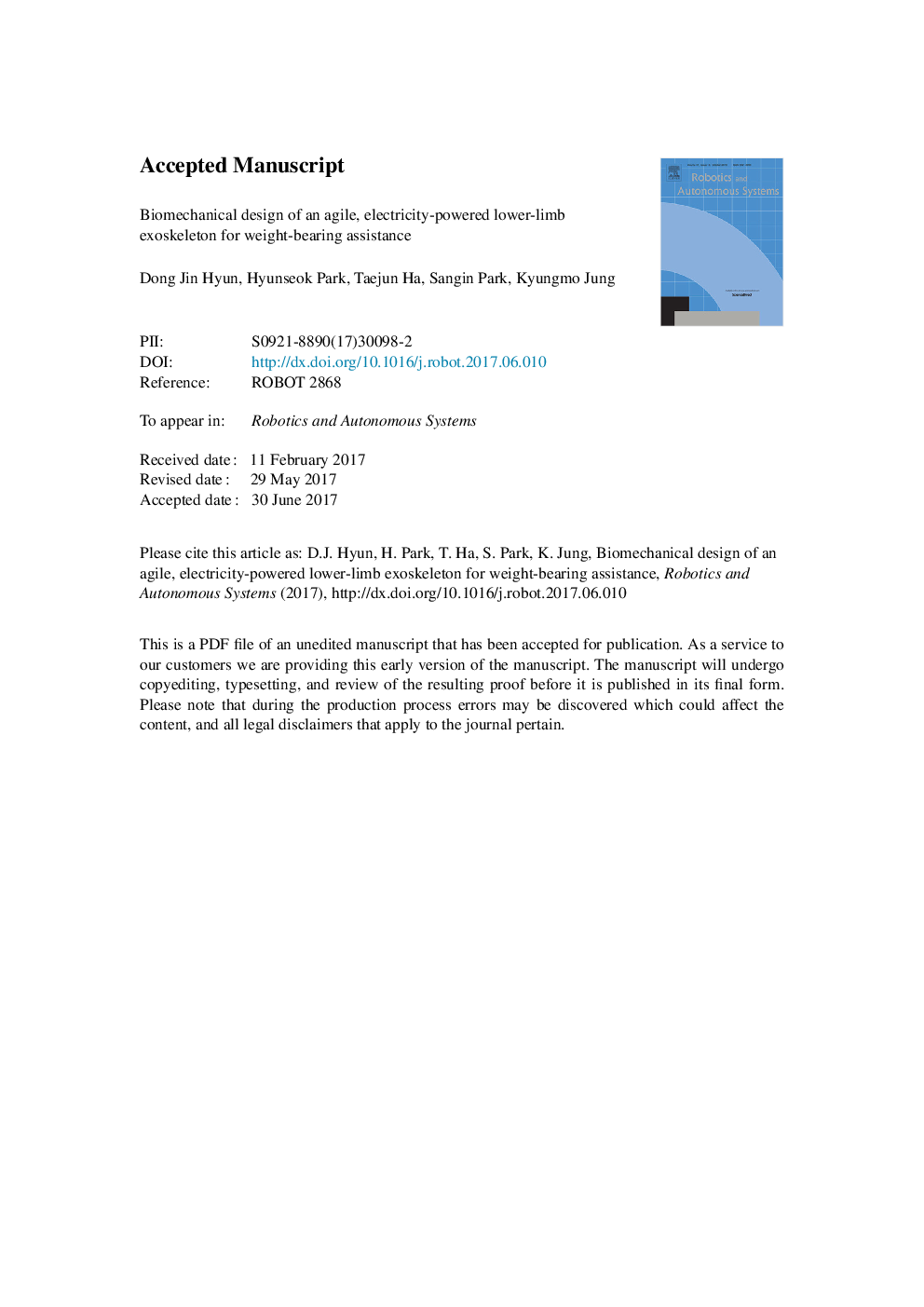| Article ID | Journal | Published Year | Pages | File Type |
|---|---|---|---|---|
| 4948672 | Robotics and Autonomous Systems | 2017 | 20 Pages |
Abstract
This paper proposes the design of an electricity-powered lower-limb exoskeleton called “Human Universal Mobility Assistance (HUMA)”. HUMA was developed as a research platform with the objective of providing its wearer with weight-bearing assistance for human strength/endurance augmentation. It has 12 degrees of active/spring passive/free passive freedom to assist human locomotion. The artificial leg has two electricity-powered degrees of freedom (DoFs) for hip/knee flexions/extensions, passive spring-installed two DoFs for ankle inversion/eversion and plantarflexion/dorsiflexion, and two free, passive DoFs for hip roll/yaw movements. HUMA has mechanical structures for active artificial hip and knee joints; the hip actuator is not directly connected to the robot's leg system, but a universal joint is installed between the actuator and the leg system to allow a free coaxial hip yaw/roll DoF for the wearer. Therefore, the hip-actuating torque is transferred solely for hip flexion/extension. Its active artificial knee is structured by a four bar-based polycentric linkage, and is power=driven by an actuator in the middle of the robot's thigh segment through the other four bar-based power transmission linkage. This powered knee structure yields several advantages related to (1) human-robot knee alignment during leg motion, (2) the expansion of the zone of voluntary knee stability, (3) the angle-dependent variable knee torque/velocity amplification ratio, and (4) a reduction in the total moment of artificial leg inertia. The exoskeleton was tested for dynamic gait by using assistive torques determined by a control algorithm. Experiments were conducted on the robot while it walked at 5 km/h (â1.39 m/s) with/without a 20 kg load, as well as for a 10-km/h (â2.78 m/s) run.
Related Topics
Physical Sciences and Engineering
Computer Science
Artificial Intelligence
Authors
Dong Jin Hyun, Hyunseok Park, Taejun Ha, Sangin Park, Kyungmo Jung,
